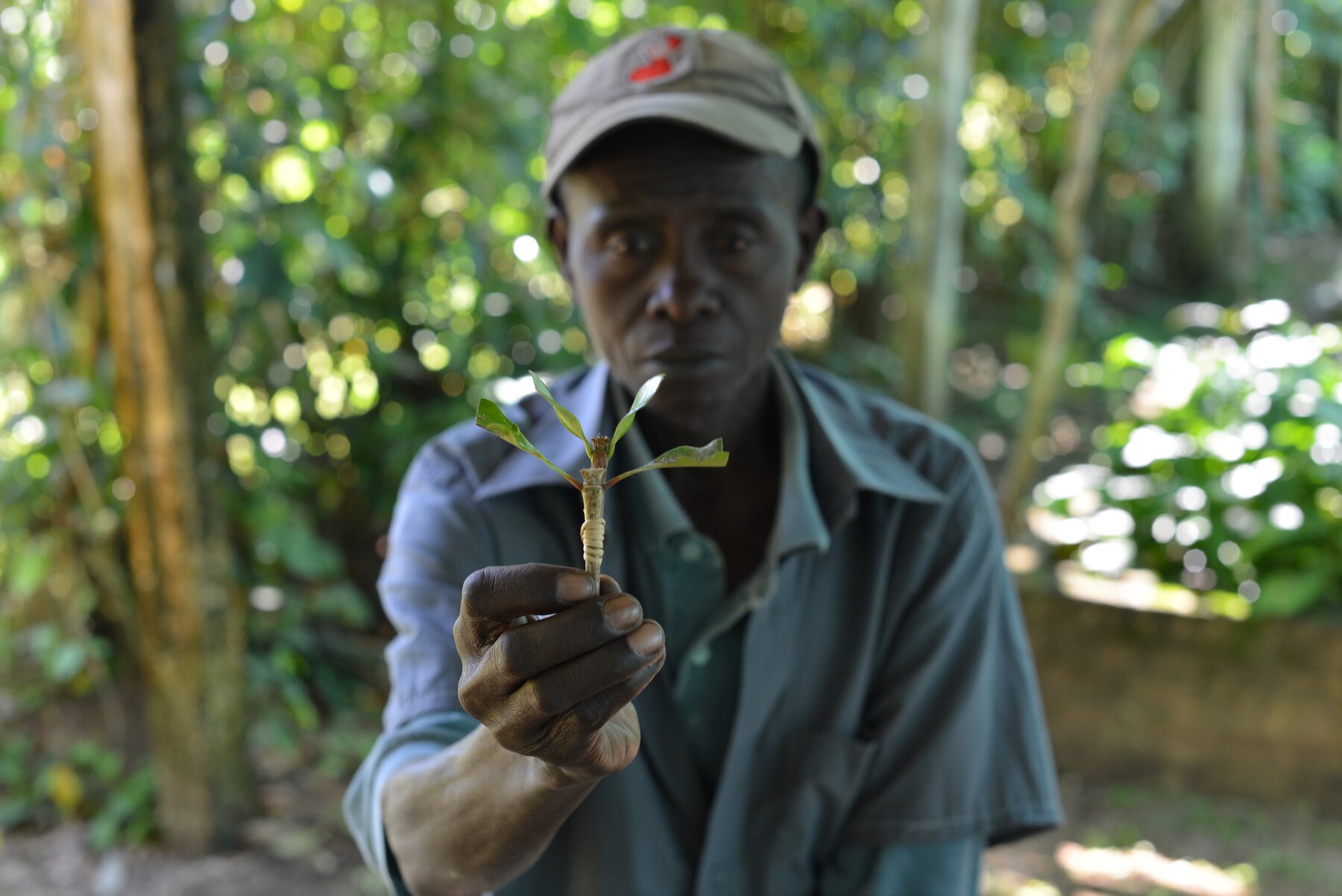Saving Coffee
Coffee plays a significant economic role globally as well as serving as a major source of foreign earnings in many producing countries. Produced in about 80 countries, an estimated 125 million people in Latin America, Africa and Asia depend on it for their livelihoods.
Saving Coffee
Despite challenges, world coffee production has grown steadily over the past 50 years. However, it will be difficult to maintain this trend due to the continued rise in production costs, as problems related to the negative impacts of climate change and the higher incidence of pests and diseases.
A key to meeting these challenges will lie in utilizing the coffee genetic resources conserved in field genebanks, in protected areas, and in the forest to develop improved varieties with drought stress tolerance, pest and disease resistance, high cup quality (the summation of aromatic intensity, aromatic quality, acidity, astringency, bitterness, body, flavor, and overall standard), and increased production.
In an effort to meet these challenges, the Crop Trust has partnered with World Coffee Research to develop the Global Conservation Strategy for Coffee Genetic Resources. The goal of this strategy is to ensure the conservation and use of coffee genetic resources for a positive, sustainable future of the crop and for those who depend on coffee for a livelihood.
State of the World's Coffee
A background study was done on the vulnerability of coffee genetic resources conserved ex situ and in situ, as well as on the main constraints to the use of these genetic resources. A survey of the status of major coffee collections was done, site visits were made to seven of these collections, and the cost of conservation of the coffee collection at the Centro Agronomico Tropical de Investigacion y Ensenanza’s (CATIE) was studied. The main objective of these assessments was to assess the security of the current conservation system, its significant gaps, its resource requirements, and its significant constraints as well as opportunities for use.
Based on both the survey and site visits, conclusions can be drawn about the current global system for the conservation of coffee ex situ collections:
- The first observation is that it is not a system. The current situation is of a set of nationally-focused collections that are isolated from each other and from external users.
- Generally, in most institutions, the conservation of a collection is secure due to the dedication and commitment of the institutes and their staff. Everyone is challenged, to some degree, to cover the annual cost of routine conservation operations.
- The current 'system' is not sustainable, secure, cost-effective, or rational. To ensure the sustainability of coffee production now and in the future, we need a global system that secures unique accessions as a global resource.
High Priority Actions
Through the global conservation strategy development, six high-priority actions have been identified to facilitate the transition from the current ‘system’ to a global conservation system for coffee.
- Secure stable funding for long-term conservation of the origin plus at CATIE collections through the Crop Trust Endowment Fund
- Upgrade facilities and capacity of origin and user collections
- Use of an ABS that will facilitate germplasm exchange and use
- Establish the global platform for collaboration in coffee genetic resources conservation and use
- Ensure the safety duplication of all conserved accessions
- Increase the complementarity of ex situ and in situ conservation of coffee genetic resources.
Taking Action For Coffee
To support this effort, there is also a need to recognize the collective responsibility that governments, producers, processors, and consumers have for this key resource. The current coffee value chain globally suffers from inequity in terms of the allocation of value to production by farmers in producing countries versus value addition for processing and marketing in consuming countries. The sustainability of the global value chain will depend upon research and development built upon the coffee germplasm conserved for future use. This support will need to come from the industry and consumers.
The Crop Trust and WCR estimate that it will cost about USD 1 million a year to support the most important coffee collections. A global endowment of USD 25 million, paying out 4% per year, would provide that ongoing funding forever, without the need to scrape together funding year to year. The Crop Trust and WCR will now work to find funding for the Crop Trust Endowment Fund to ensure secure funding for the coffee collections, forever.
Get in touch with us about how you can help to save coffee.
Related news
Brewing a Future: Crop Trust and Germany Safeguard Costa Rica's Coffee Heritage
Recently, the world woke up to a collection of coffee at risk. The genebank at the Tropical Agricultural Research and Higher Education Center (CATIE) in Turrialba, Costa Rica houses nearly 2,000 coffee varieties. Established 75...
3 Dec 2024
The Crop Trust Welcomes Dr. Sarada Krishnan as Director of Programs
The Global Crop Diversity Trust is excited to announce that, after a thorough and competitive recruitment process, Dr. Sarada Krishnan has been selected for the position of Director of Programs.
Dr. Krishnan joins the Crop...
21 Mar 2022




